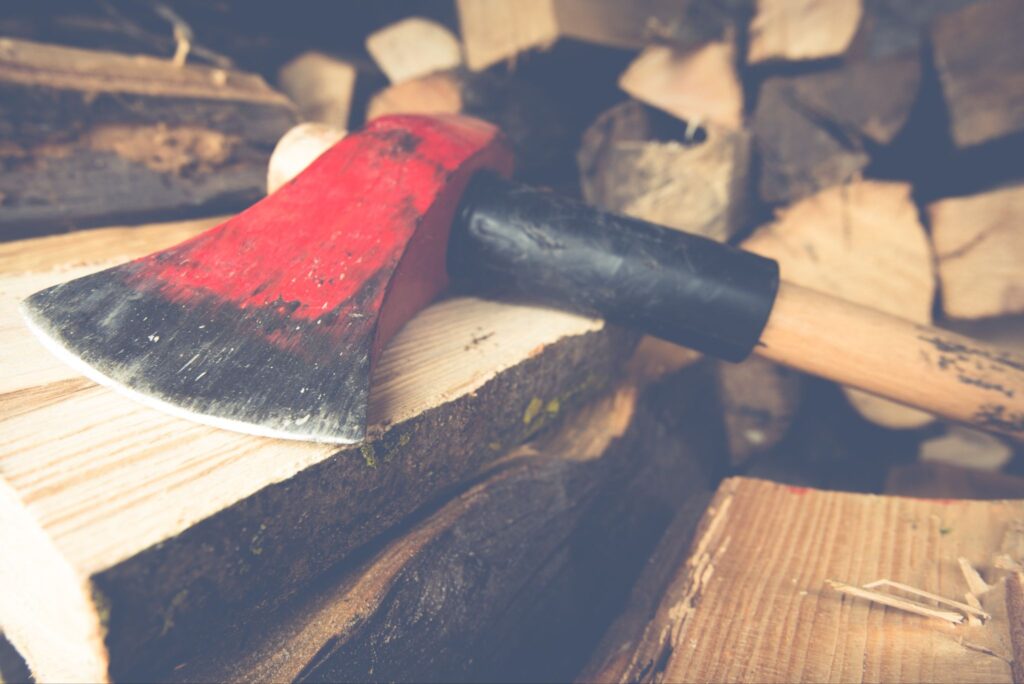Axe-throwing has become a popular recreational activity in recent years, with enthusiasts and beginners alike enjoying the thrill of hurling an axe at a target. While it might seem like a straightforward activity, there’s a surprising amount of science behind it. To consistently hit your target in axe-throwing, you need to understand the principles of physics, biomechanics, and psychology that come into play. In this blog post, we’ll delve into the science of axe-throwing and provide tips to help you improve your accuracy and precision.

The Basics of Axe-Throwing
Before we get into the nitty-gritty of the science behind axe-throwing, let’s go over the basics. Axe-throwing involves throwing an axe at a wooden target, aiming to hit a specific bullseye or target area. The goal is to stick the axe into the target with as much accuracy and precision as possible. Here are some key terms to know:
- Bullseye: The central target area you aim to hit for maximum points.
- Handle: The part of the axe that you hold.
- Blade: The sharp, heavy end of the axe.
- Rotation: The spin or turn of the axe during flight.
- Release Point: The moment when you let go of the axe.
- Follow-Through: The movement of your hand and arm after the release.
The Physics of Axe-Throwing
Axe-throwing involves several physical principles, including:
1. Center of Gravity
Every axe has a center of gravity, which is the point where all the weight is evenly distributed. The location of the center of gravity affects the axe’s stability during flight. A well-balanced axe is crucial for accuracy.
2. Angular Momentum
Angular momentum is the rotational motion of an object. When you throw an axe, you impart angular momentum to it. The amount of spin you put on the axe can influence its stability in the air.
3. Parabolic Trajectory
The axe follows a parabolic trajectory when thrown. This means that it moves in an arc, with its path curving downward due to gravity. Understanding this trajectory helps you gauge the right angle and distance to hit the target.
4. Release Angle
The angle at which you release the axe is vital. If you release it too early or too late, it will affect the axe’s rotation and accuracy. Aim to release the axe at the right point in its trajectory to maximize accuracy.
Tips for Hitting Your Target
Now that we’ve covered some of the science behind axe-throwing, let’s explore some practical tips to improve your accuracy:
1. Stance and Grip:
Start with the right stance. Stand with your non-throwing foot slightly forward, with your feet shoulder-width apart. Next, hold the axe with a firm but not overly tight grip. Your dominant hand should grip the handle, while your non-dominant hand supports the bottom of the handle.
Finally, position your dominant hand near the end of the handle for better control over the axe’s rotation.
2. Aim and Focus
Focus your gaze on the bullseye or target area. Concentration is crucial for accuracy. Then, align your dominant eye with the target to ensure proper aim. If you’re right-eye dominant, your right eye should be in line with the target.
3. Body Mechanics
Engage your core and keep your body steady throughout the throw. This stability helps maintain a consistent motion. You’ll also want to use your hips and torso to generate power in the throw. Your arm and shoulder strength are secondary to the rotational force from your body’s core.
4. Timing and Release
Time your throw to coincide with the peak of your body’s rotation. This maximizes your kinetic energy and helps propel the axe accurately. The release should be smooth and fluid. Don’t jerk or force it. Let the axe slide out of your hand at the right point in the throw’s trajectory.
5. Rotation Control
To control the axe’s rotation, use your wrist’s flicking motion just before the release. This can help add or subtract spin as needed. Practice to find the right amount of spin for different distances. More spin is generally needed for longer throws.
6. Follow-Through
After releasing the axe, maintain a consistent follow-through. Your hand and arm should continue their path in the direction of the target. A proper follow-through helps keep your body in balance and ensures a smoother throw.
7. Practice and Patience
Axe-throwing is a skill that improves with practice. Don’t be discouraged by early misses. Focus on your form, aim, and consistency. Record your throws and review them to identify areas for improvement.

The Mental Aspect of Axe-Throwing
Beyond the physical and mechanical aspects, axe-throwing also has a psychological component. Your mental state and focus play a significant role in hitting your target. Here are some mental tips:
1. Visualization
Before each throw, visualize yourself hitting the bullseye. This mental rehearsal can improve your accuracy.
2. Confidence
Approach each throw with confidence. Doubt and anxiety can hinder your performance. Trust your training and ability.
3. Breathing
Pay attention to your breathing. Deep, steady breaths can help calm nerves and improve focus.
4. Consistency
Develop a consistent routine and ritual before each throw. This can create a sense of comfort and familiarity that enhances your mental state.
5. Patience
Axe-throwing, like any skill, takes time to master. Be patient with yourself and enjoy the learning process.
Improve Your Axe-Throwing Skills Today
Axe-throwing is a unique and exciting recreational activity that blends science, physics, and psychology. Understanding the principles of axe-throwing and applying the tips mentioned in this blog can significantly improve your accuracy and precision. As you practice and refine your technique, you’ll find that hitting your target becomes more consistent and satisfying. So, grab an axe, head to the nearest axe-throwing facility, and embrace the science behind this thrilling pastime.
Check out our Propel Axe blog today to learn more about our events for groups of all sizes in Arvada, CO.


 720-330-9755
720-330-9755
